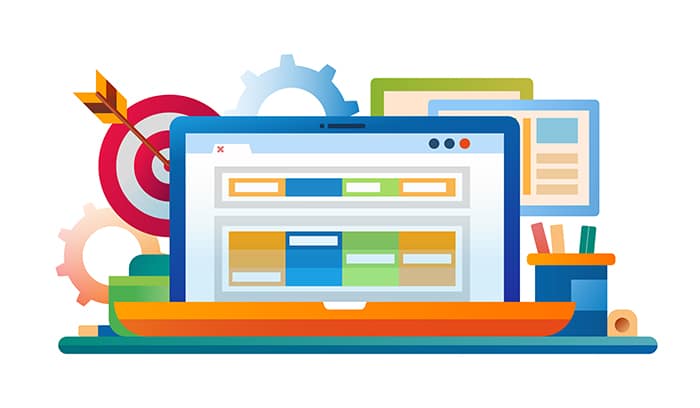As a marketing agency, you have a lot of data points, metrics, key performance indicators, and details to monitor and manage for your clients and for your own agency. It can get overwhelming and it’s a never ending job, that’s for sure.
In today’s world, data is everything for a marketing agency. With more and more of the marketing and advertising today moving digital as we all transition from more of an outbound philosophy of marketing to more of an inbound practice, we are able to track, measure, optimize, and monetize more of our data every single day. That goes for your clients as well as your own agency.
So with this shift, your clients and your team (including investors) will look to you to keep track of specific pieces of data and they will rely on you to make the most of that data and use it in a way that moves your agency and their businesses forward strategically.
To keep up with this rising expectation and continue to grow, there are a few dashboards that every single agency needs to have set up and accessible right away and moving forward. Here are five kinds of dashboards that we don’t think a marketing agency can live without.
Financial Dashboard
Whether you are a marketing agency, convenience store, sell fidget spinners online, a laundromat, or any other kind of business, you have to know your financials in order to not only grow, but even just to keep the doors open and the business operating. It is a fundamental piece of running a business and if you do not have a good grasp of your numbers and finances, you are likely headed for an abrupt end to your business or at the very least, some unexpected issues and headaches.
Your financial dashboard should include a few different things, specifically for a marketing or advertising agency:
- Gross Revenue
This is an overall metric that you will want to keep track of throughout the year. You need to know how much revenue you are bringing in each year and even each month. Keeping an eye on this will help you start to understand which pieces of your agency are producing the most (or least) amount of income as well as give you a way to manage how each dollar is spent so you can move more of that top line revenue to bottom line profit. - Income from Clients – including projections
Next you should break out revenue by client. This should include income that has already been paid to your agency, but also estimates and projections of what you expect that client to purchase from you through the end of your fiscal year. Keeping track of this data will help you understand which clients are helping to move your agency forward, which clients may not be a good fit for your agency any longer, and even if you have an issue with your client spread.PRO TIP: Your agency should never have a single client that is responsible for more than 10% of your overall revenue. Having a very large client that is responsible for more than 10% of your income puts you in a very vulnerable position if that client decides to stop doing business with you. You’ll likely have to lay people off or even close your doors altogether if you have a client that represents too large of a percentage of your revenue and they abruptly end their relationship with your agency.
- Accounts Receivable
In any service based industry, accounts receivable are very important and can be a major source of frustration. One of the easiest ways to go out of business, especially for a very young agency, is to allow your accounts receivable to get out of hand. From the very start, you should be setting expectations with your clients on terms. Keeping a very close eye on the age of your A/R will help you to manage cash flow and identify issue clients before you continue working for them without getting paid. - Outstanding Proposals and Values
Obviously you don’t want to count a proposal as a sale (that can be a major mistake), but keeping tabs on your outstanding proposals and the values of those proposals will help you make sure no proposal slips through the cracks, leads are being followed up with, and it will help you to understand what potential resources and hiring needs you may have coming up. - Costs and Overhead
This one is pretty simple and goes hand in hand with your gross revenue from earlier. Every agency is in business to make money. If you are spending more than you are bringing in, you are likely not going to be in business very long. Your gross revenue and cost widgets should either be next to each other on your financial dashboard or they should be used together in a mashup to help you recognize if your costs are becoming too high and becoming a problem for your marketing agency.
PM Dashboard
Every agency has multiple projects going on at the same time. That means multiple people on your team doing multiple jobs for multiple clients. It can get out of hand very quickly and something is likely to fall through the cracks if you do not keep a very close eye on the projects that you currently have running and upcoming.
Your project management dashboard can alleviate all of those stresses. By creating a project management dashboard you can integrate softwares like Basecamp into your dashboard so you can view what’s going on with each project in a single view.
Other metrics that you should also consider tracking in your PM dashboard is employee productivity, billable vs. non-billable time, upcoming projects or opportunities, employee utilization, and team updates. Stay up to date and ahead of your projects and you will have a more productive team and happier clients.
Leads Dashboard
If you are “drinking your own Kool-Aid”, you are probably marketing your agency just like you would be marketing a client’s business. Well, hopefully that’s the case! Our first tip here is to actually treat your agency like your BEST client. What kind of credibility do you have with a client when you recommend a certain campaign, if you aren’t taking your own advice?
Ok, now that we’re off our soapbox, your lead dashboard should function as a way to keep track of your sales team as well as the leads that you are generating through your marketing initiatives. This would include data to help you identify which of your salespeople are meeting their quota, which aren’t, as well as where leads are coming from, which leads are closest to the bottom of the funnel, and which need further nurturing. Keeping great track of your leads will help you close more business because your follow up will be faster and sales team productivity will be higher.
Overall Client Performance Dashboard
As an agency, you have undoubtedly talked with a prospect that wanted proof. Every agency talks a good game. No advertising or marketing agency out there is telling a prospect, “This campaign that we are recommending for your business won’t work” or “We aren’t very good, but you should hire us anyway.”, but there are tons of businesses out there that have been burned by an agency in the past and are wary of jumping in with a new agency.
This is where an overall client performance dashboard can come in very handy. You will be armed with the data necessary (without revealing your clients or client list) to show that you know your stuff. In this dashboard you can include metrics like website visits, organic search traffic, social media follows, pay-per-click spends, return on investments, and really any metrics that your prospects may find convincing and useful.
PRO TIP: Be sure not to include any identifying information on this dashboard if it is going to be shown to prospects. Use generic titles or use an established code to allow you and your team to know which data is being pulled from which client, but isn’t understood by a prospect.
Marketing Dashboard
Like we mentioned earlier, hopefully your marketing agency isn’t just marketing for your clients. Hopefully you are also taking your own advice and using your skills and knowledge to market your agency to help you grow.
If that is the case, then you must have a marketing dashboard. This data dashboard would help you keep a close eye on the campaigns that you have running and help you to determine which tactics and campaigns are working, which aren’t, and how you can improve.
Things to consider here include website traffic, sources, visitor to lead conversion, lead to customer close rate, the effectiveness of each tactic or channel, content, social media, pay-per-click, and any other mediums that you’re using to market your agency.
Again, treat your business as your best client. What information would you need to see in order to keep your best client happy and to continue to help grow their business? That information should be on your agency’s marketing dashboard.
Have you finally realized that you need a better option to track all of these metrics for your agency, but don’t have a giant budget? We’ve got the perfect solution! Try Cyfe! Your first data dashboard is completely free with no strings attached, no credit card necessary, and no B.S.



